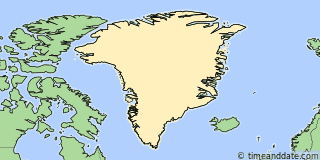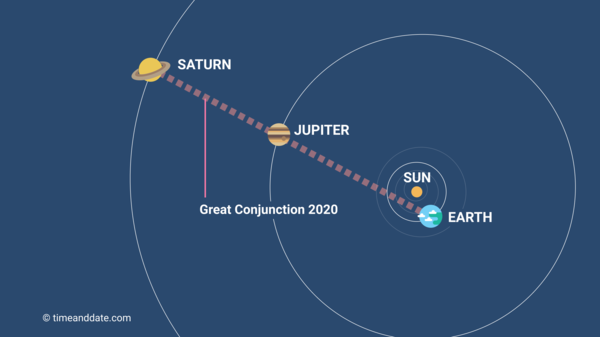| Night Time: | All day |
|---|---|
| Sunset: | None |
| End of Twilight*: | None |
| Start of Twilight*: | None |
| Sunrise: | None |
⚠ Station Nord has polar night
Coming Up in December
Nights are at their darkest in the Northern Hemisphere, and the Full Moon rides high in the sky. Meanwhile, the Southern Hemisphere enjoys long, bright evenings.
Our Interactive Night Sky Map simulates the sky above Station Nord. The Moon and planets have been enlarged slightly for clarity. On mobile devices, tap to steer the map by pointing your device at the sky. Need some help?
Tonight's Sky in Station Nord, Dec 4 – Dec 5, 2025
Jupiter rise and set in Station Nord
Up all night.
Jupiter is up all of the polar night.
Time:
Altitude: °
Direction: °
Saturn rise and set in Station Nord
Up some of the night.
Saturn is visible more than 8 hours during the polar night. It is very close to the horizon, making it fainter because the light has to cover a larger distance when traveling through the Earth's atmosphere. Make sure to get an unobstructed view with as little light pollution as possible.
Thu, Dec 4 ↑3:35 pm
Fri, Dec 5 ↓12:18 am
Time:
Altitude: °
Direction: °
Uranus rise and set in Station Nord
Up all night. Bring binoculars.
Uranus is up all of the polar night. You may need binoculars.
Time:
Altitude: °
Direction: °
Neptune rise and set in Station Nord
Up some of the night. Use binoculars.
Neptune is visible more than 11 hours during the polar night. It is quite close to the horizon, making it fainter because the light has to cover a larger distance when traveling through the Earth's atmosphere. Make sure to get an unobstructed view. Very faint, use binoculars.
Thu, Dec 4 ↑2:36 pm
Fri, Dec 5 ↓1:45 am
Time:
Altitude: °
Direction: °
Planets Visible in Station Nord
| Planetrise/Planetset, Fri, Dec 5, 2025 | ||||
|---|---|---|---|---|
| Planet | Rise | Set | Meridian | Comment |
| Mercury | Down all day | Thu 11:33 am | Down all night, not visible | |
| Venus | Down all day | Thu 12:23 pm | Down all night, not visible | |
| Mars | Down all day | Thu 1:36 pm | Down all night, not visible | |
| Jupiter | Up all day | Thu 3:58 am | Perfect visibility | |
| Saturn | Thu 3:35 pm | Fri 12:18 am | Thu 7:57 pm | Difficult to see |
| Uranus | Up all day | Thu 12:01 am | Fairly good visibility | |
| Neptune | Thu 2:36 pm | Fri 1:45 am | Thu 8:11 pm | Very difficult to see |










